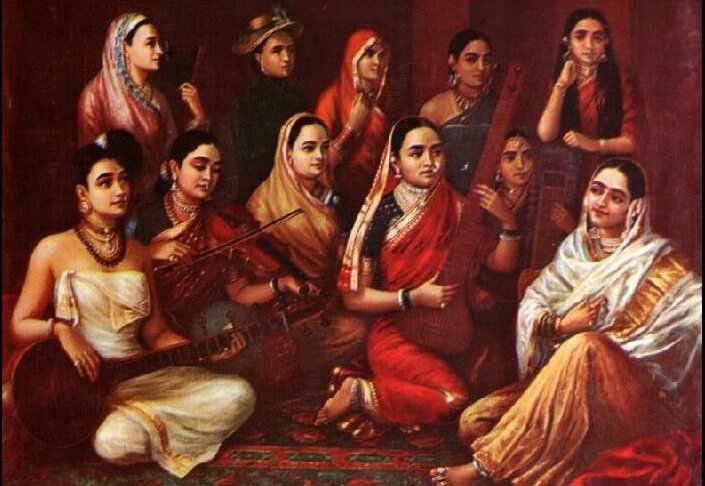What is Western Classical Music? How is it different from Indian Classical Music?

For some, Western classical music is what plays in the background in elevators, reception rooms, and lounges. For others, it is what snobbish ‘intellectual’ artsy folks indulge in pretentiously. We will try to go beyond these myopic perspectives and try to get a glimpse of what is great, enlightening, and thoroughly enjoyable about Western classical music. One way to do this is to shed light upon its contrasts with Indian classical music.
The term “Classical music” originates from the Latin classicus, meaning first class, or for the Romans, artistry of the highest order. It encompasses a vast range of music styles over a period of 800 years. Sometimes, the term “Art music” is used. Western classical is just one among many different traditions of classical music, so when we’re discussing Western classical music, we’re specifically discussing European classical music. To make matters more confusing, there is a specific period in history referred to as the “Classical Period”, which differentiates the style of music in that era from other eras preceding and succeeding it. We shall delve into these different “periods” in subsequent posts. The point is to be contextually aware of what is meant by “Classical” when you’re reading or conversing with others.
Throughout the history of Western classical music, there have been two strands of evolution, usually distinguishable from each other, which evolved in parallel – Church music and Secular music. For example, Church music includes Gregorian Chants, Carols, Mass, and Requiems, while Secular music includes sonatas, concertos, symphonies, and opera. Both Church and Secular music influenced each other, while evolving and adapting to man’s ideological progress in history.
What primarily differentiates classical music from popular music?
There are two ways of appreciating any music – cerebral and emotional, or from the mind and the heart. Cerebral listening requires a mental effort on the part of the listener, while our emotional response is usually automatic and lies in our subconscious. Neither are the two ways mutually exclusive, nor is one right and the other wrong. Both are very valid, very real. We shift from one to the other even during the process of listening. And, you can appreciate popular music in a cerebral fashion too.
You can simply listen to Western classical music and like it without thinking much about it. If you do, go ahead and enjoy yourself! Nothing wrong about it. I however, passionately believe that a superlative appreciation of Western classical music comes from a synthesis of both cerebral and emotional approaches. Without an understanding of the form and structure of Western classical music, or lack of knowledge of a specific work’s place in history, you might still enjoy listening to it, but you will miss out appreciating it a great deal more. I believe that when the cerebral is coupled with emotion, it leads to a fulfilling appreciation of Western classical music.

There are challenges in appreciating Western classical music. But the rewards are equally great. Here are some differences between Western and Indian classical music, which will help you enjoy and engage with both of them, a little more.
Indian classical music refers to Hindustani as well as Carnatic classical music. There are significant differences between the two, but for our current focus, they can be considered as one. Also, there are exceptions to every point below, what we are concerned with are broad differences.
homophony vs. polyphony / melody vs. harmony
Indian classical music is primarily homophonic, which means its focus is on melodies created using a sequence of notes. Indian classical music’s magic is primarily experienced with different melodies constructed within the framework of the ragas, while Western classical music’s magic lies to a great extent in polyphonic composition, where counterpoint, harmony, and the texture created using multiple voices is critical. Melody exists in Western classical music too, but from a broad perspective, is not the singular or defining focus of most of Western classical music works.
composed vs improvised
Western classical music is composed, Indian classical music is improvised. All Western classical music compositions are formally written using the staff notation, and performers have virtually no latitude for improvisation. The converse is the case with Indian classical music, where no ‘work’ is ever written down, and the teacher-student tradition of learning Indian classical music leads to each performance being an improvisation.
vocals / instrumentation
Vocals are used in both Indian classical music and Western classical music, but the way they are treated in relation to other instruments is different. When vocals are used in Indian classical music, the rest of the instruments are mere ‘accompaniments’ — there are tanpooras that act like drones, harmoniums that follow the tonality of the voice by providing chords and so on. Whereas in Western classical music, when vocals are used, the instrumentation carries a lot of weight in the overall composition. In other words, voice forms the basis of the structure surrounding an Indian classical music recital, whereas it is an addition to the instrumentally generated structure of a Western classical music composition.
The term ‘voice’ is hence used in a generic way in Western classical music and doesn’t always mean human voice. A ‘voice’ can be any theme played by an instrument. Thus, one can have a four-voice fugue being played on the piano using two hands, where each hand is playing one of four voices at any given time.
group vs individual dynamics
In Indian classical music, the individual performer shines through his improvisation. In any recital or performance, there is a lead vocalist or instrumentalist who expounds the raga, while others provide accompaniment and are relegated to the background (except for occasional interludes where they show off their virtuosity). In Western classical music, the composer and conductor shine as individuals, but the performance is largely a group effort. It is only in solo works and solo concertos that individual performers are under the spotlight.
rhythm
Indian classical music uses ‘Taal’ — a cycle of beats centred around ‘Sam’ that repeats itself. Western classical music does not use such complex beat cycles.
‘shruti’ / microtones
Indian classical music makes extensive use of quarter-tones and microtones, usually referred to as ‘Shruti’.Western classical music has a few microtonal pioneers in recent times, but has largely been restricted to using semitones.
consonance & dissonance
As far as I know, Indian classical music does not use or encourage dissonance. Modern Western classical music has used dissonance extensively to add to the texture of the composition.
nature & spirituality
Indian classical music has a closer, intimate association with nature than Western classical music. Ragas have specific times of day or seasons of the year associated with them, while most Western classical music does not have any such characteristic. The roots of Indian classical music are spiritual, while secular works in Western classical music have roots in factors like individual experiences, significant historical events in human history, entertainment, occasions with dance celebrations and so on.
The depth of intellectual satisfaction you can get from Classical music (Indian or Western) is unparalleled. The rewards are proportional to the effort you put in. It is for a reason that such music is described as “Classical” in the first place! And remember that all music is universal. By appreciating Western classical music, you are not disrespecting or ignoring any other traditional music or heritage. In fact, if you are able to appreciate the fundamental differences between Western classical music and say, Hindustani classical, you will gain more insight into Hindustani classical than you would have if you had ignored Western classical music altogether.
To wrap up, I quote one of our most well-known poets, who was also an accomplished musical composer, Rabindranath Tagore:
“For us, music has above all a transcendental significance. It disengages the spiritual from the happenings of life; it sings of the relationships of the human soul with the soul of things beyond. The world by day is like European music; a flowing concourse of vast harmony, composed of concord and discord and many disconnected fragments. And the night world is our Indian music; one pure, deep and tender raga. They both stir us, yet the two are contradictory in spirit. But that cannot be helped. At the very root nature is divided into two, day and night, unity and variety, finite and infinite. We men of India live in the realm of night; we are overpowered by the sense of One and Infinite. Our music draws the listener away beyond the limits of everyday human joys and sorrows, and takes us to that lonely region of renunciation which lies at the root of the universe, while European music leads us a variegated dance through the endless rise and fall of human grief and joy.”
This piece has been edited by Neharika Gupta. Neharika is a 24-year-old poet and writer. She holds an MA in Creative Writing from Bath Spa University in the UK. She likes to spend her time scuba diving and writing about the plethora of interesting things she comes across as a young traveller and foodie. You can check out her work at: www.neharikagupta.com





